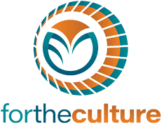Culture Festivals
Want To Know About Festivals!
Listed below
European Culture Festival
SEMANA SANTA (SPAIN)
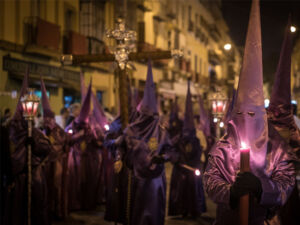
In parts of Latin America, the week between Palm Sunday and Easter, also known as Holy Week, is referred to as Semana Santa. This is a moment to remember Christ’s last week on earth.
Spain’s Semana Santa celebrations differ from place to region: Málaga and Seville hold some of the most lavish events, while Valladolid and Zamora often hold more solemn celebrations.
The main purpose and components of these religious holidays, however they are observed, often remain the same, with processions of Catholic brotherhoods or fraternities parading through the streets.
Penitents, or nazarenos, parade through the streets holding processional candles or crosses and donning brightly colored robes that conceal their faces.
Because the processionals can sometimes run longer than 10 hours, many people walk barefoot while being restrained by chains and shackles.
The Nazarenos travel using big floats called Pasos, some of which have been utilized by the brotherhoods for decades. These are embellished with intricate sculptures that represent scenarios from key biblical chapters, such as the Passion of Christ and the Virgin Mary in grief.
St Patrick Day (Ireland)
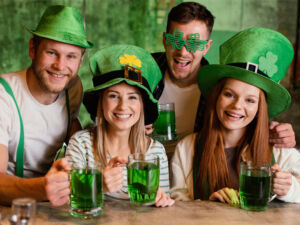 The popular holiday that most Americans identify with St. Patrick’s Day really started as a religious festival to remember Ireland’s patron saint who passed away.
The popular holiday that most Americans identify with St. Patrick’s Day really started as a religious festival to remember Ireland’s patron saint who passed away.
Saint Patrick was abducted at the age of 16 and sent to Gaelic Ireland. He was born to a devout household perhaps in the year 385 AD in Roman Britain. Before leaving, he spent six years working as a shepherd there.
He eventually returned home and became a priest. Later, he went back to Ireland, where he persuaded many pagan people to become Christians by illustrating the Holy Trinity with the three shamrock leaves.
One of the most widely observed holidays in the world is the St. Patrick’s Day festivity. In actuality, it is observed in more nations than any other national holiday. However, doing it in Ireland is undoubtedly a memorable experience!
Every year on March 17, people dress as festively as they can in green and shamrocks to either participate in or watch elaborate parades that march through the streets.
One of the most well-known St. Patrick’s Day Parades is in Dublin, which draws more than 500,000 visitors annually! The Lenten fast is officially over for the day, and the streets are filled with traditional Irish folk music and plenty of food and drink to enjoy.
African Culture Festival
The Ouidah International Voodoo Festival
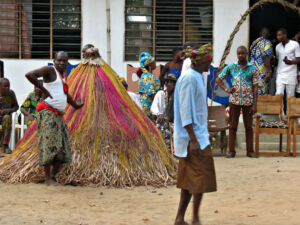
The Ouidah International Voodoo Festival, which takes place in Benin, West Africa, on January 10 every year, is the biggest gathering of practitioners and followers of Voodoo (also known as Vodun). It draws close to 10,000 visitors from different backgrounds and countries.
West African Vodun, an ancient religion built around the idea that there are holy spirits (known as vodun) who rule the Earth, is usually viewed as having its roots in Benin.
Major deities rule over society and environment, while minor spirits reside in rocks, trees, streams, and rivers. There is a hierarchy of authority. Additionally, there are vodun devoted to certain tribes and nations.
The customary butchering of a goat in gratitude to the spirits ushers in the Ouidah International Voodoo Festival. Following the sound of ceremonial drums, a lively gathering with traditional dances takes place.
Participants may be adorned with local powder and palm oil, and ladies frequently wear vivid clothing.
Additionally, there are marketplaces stocked with fetishes, masks, and wood carvings that are thought to be home to spirits and possess magical and spiritually significant characteristics.
BLACK-NECKED CRANE FESTIVAL (BHUTAN)
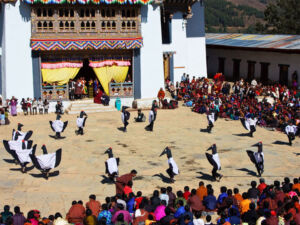
The Black-necked Crane Festival, held in the courtyard of Gangtey Goemba, one of Bhutan’s oldest and biggest Nyingma monasteries, attracts sizable groups of people to mark the arrival of the endangered birds.
These magnificent birds are the subject of several folktales and songs in Bhutan, where they are revered as holy and a representation of enduring life.
Additionally, Black-necked Crane paintings may be seen all around the nation, on the walls of temples.The Phobjikha Valley’s farmers look forward to the birds’ arrival since it is thought that they will bring wealth and abundant crops after migrating from their summer habitat on the Tibetan Plateau.
Every year in November, there is a one-day festival to mark their arrival.
HOLI FESTIVAL (INDIA/PAKISTAN)
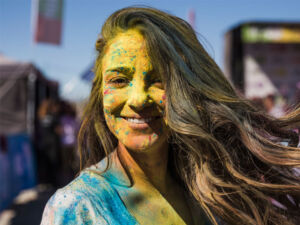 The ancient Hindu celebration of Holi, sometimes referred to as the “festival of colors” or “the festival of love,” commemorates the end of winter and the victory of good over evil.
The ancient Hindu celebration of Holi, sometimes referred to as the “festival of colors” or “the festival of love,” commemorates the end of winter and the victory of good over evil.
Numerous tales are related to the celebration. One theory is that it honors Prahlada, a follower of the Hindu god Visnu, and them for overthrowing Hiranyakashipu, Prahlada’s oppressive father.
Some contend that it is connected to Shiva, who is recognized as a potent transformer and destroyer of evil, while others contend that it is a celebration of the tremendous love Radha felt for the god Krishna.
The festival’s opening night, also known as Holika Dahan or Chhoti Holi, sees crowds of people performing religious rites in front of enormous bonfires that stand for the eradication of sin and the forgiving of the past.
The event really gains momentum on the day after, known as Holi. In addition to a brilliant variety of colored powders, people are swarming the streets of India with water pistols and water-filled balloons to splash each other with.
In addition to traditional foods and beverages, marching bands and dance are frequently featured during the joyful event, which unites people in jubilant celebration.
Latin America Festival
DÍA DE LOS MUERTOS (MEXICO)
 Dia de Los Muertos, often known as the Day of the Dead in English-speaking nations, is one of Mexico’s most significant holidays, falling on October 31 to November 2.
Dia de Los Muertos, often known as the Day of the Dead in English-speaking nations, is one of Mexico’s most significant holidays, falling on October 31 to November 2.
This holiday’s roots may be traced to rites performed in pre-Columbian Mesoamerica in honor of the deceased, which extend back around 3,000 years.
The line separating the spirit and physical worlds is thought to blur during the Day of the Dead.
The dead’s souls might visit the living during this time to reunite with their loved ones.
People construct personal altars (sometimes referred to as ofrendas) in their houses to pay respect to the deceased. They’ll also pay respects and lay offerings at the graves of their loved ones.
North America Festival
MOUNT HAGEN CULTURE SHOW (PAPUA NEW GUINEA)
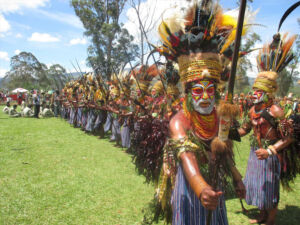 Even though Papua New Guinea is the second-largest island in the world, it only has 8 million people living there.
Even though Papua New Guinea is the second-largest island in the world, it only has 8 million people living there.
Nevertheless, despite the island’s small population, it is home to over 7,000 different ethnic groups, revealing a wealth of cultural variety.
This multicultural population led to the creation of the Mount Hagen Cultural Show in 1961. To prevent violence between the many tribes in the Highlands and Western Highlands Province, the festival helps to bring them together.
There are over 100 different tribes represented at the Mount Hagen festival, with each showcasing their own unique culture through elaborate costumes and traditional dancing and singing.
Mardi Gras
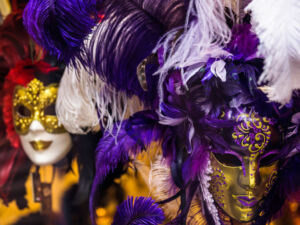 Mardi Gras is one of the most well-known cultural celebrations in the United States and is observed throughout. However, no place is nearly as rowdy as New Orleans, Louisiana.
Mardi Gras is one of the most well-known cultural celebrations in the United States and is observed throughout. However, no place is nearly as rowdy as New Orleans, Louisiana.
The origins of Mardi Gras may be traced back to prehistoric pagan festivals honoring spring and fertility. These common customs were adopted into the new religion when Christianity arrived in Rome.
The Tuesday before Ash Wednesday is “Fat Tuesday,” when Mardi Gras is celebrated. In essence, it’s a period when individuals can indulge excessively before the moderation that comes with Lent.
Leading up to the big day, there are extravagant dinners and masked Mardi Gras balls. The festival’s raucous neighborhood street parades, which feature marching bands and huge floats with individuals dressed in colorful costumes hurling beads into the throng, are the festival’s main attraction.
King Cake celebrations are yet another well-liked Mardi Gras custom. Cakes are created with a plastic baby inside, representing the infant Jesus, and decorated with purple, green, and gold icing (symbolizing justice, faith, and power).
The task of purchasing the following King Cake falls to whoever receives the slice of cake with the baby within.
Caribbean Culture Festival
Trinidad & Tobago

Carnival in Trinidad and Tobago is celebrated before the commencement of the Lenten season. In 1783 for half a century, the French developed their Carnival , which was noted to be a season of gay and elegant festivities extending from Christmas to Ash Wednesday. These festivities consisted of dinners, balls, concerts and hunting parties.
The Africans started to participate in the festivities from 1833 after the Emancipation Bill was passed. The Africans brought Canboulay to its festivities. Canboulay was first played on August 1st, Emancipation Day , but subsequently took place after midnight on Dimanche Gras, the Sunday before Carnival.
In early celebration of the festival by the masses activities were held over the three days preceding Ash Wednesday. However in the face of over 60 years of criticism from the upper class about the low standard of Carnival and strong feelings expressed about the desecration of the Sabbath, in 1943 Carnival on the street was restricted to Monday & Tuesday.
Barbados Crop Over
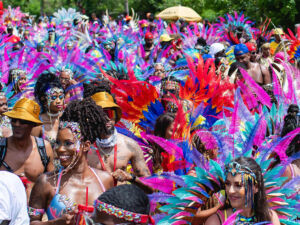
The most well-liked and colorful celebration in Barbados is Crop Over. Its beginnings are said to be founded in the 1780s, when Barbados was the greatest producer of sugar in the world.
The Crop Over ceremony was held at the end of the sugar season to commemorate the conclusion of yet another prosperous sugarcane crop.
The Crop Over event also suffered with the loss of Barbados’ sugar industry, and in the 1940s it was altogether discontinued. The festival was revived in 1974, and other facets of Barbadian culture were included to produce the current spectacular, which draws tens of thousands of visitors from all over the world.
